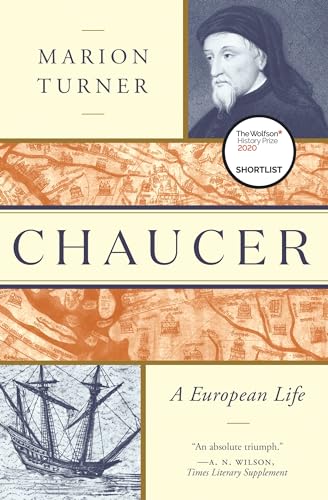Alright, strap in folks—this is my honest review of Chaucer! If you think old books are stuffy and dustier than my attic, think again. This classic is a wild ride full of jokes, weirdos, and a storytelling style that still packs a punch centuries later. I’ve read this with friends, laughed, groaned, even had to Google some words. Is it perfect? No. But it’s way more fun than you might expect. Let’s see why people are still talking about Chaucer after all these years.
In a nutsheel
Geoffrey Chaucer, the master of Middle English, wrote a true classic with The Canterbury Tales. This book is a collection of wild and funny stories told by a group of travelers on their way to Canterbury. Each traveler has their own tale to tell, so you get a mix of genres—comedy, romance, adventure, and even a little horror if you squint. The themes are all over the place too, from love and greed to honesty and good old-fashioned revenge. Chaucer pokes fun at pretty much everyone, and his sharp humor still hits today. If you like big personalities and clever jokes, this one’s for you.
The Unique Humor and Wit of Chaucer: Why He Still Makes Me Snort-Laugh
When I first picked up Geoffrey Chaucer’s work, I thought it would be all highbrow and stuffy. I imagined myself getting lost in old English words, with only the faint sound of my brain sighing. But boy, was I wrong! Chaucer is funnier than I ever expected. Right from the start of The Canterbury Tales, Chaucer mixes sharp jokes and silly puns with some good old cheeky humor. Let’s just say, he knew how to roast someone long before social media was a thing.
Chaucer has this way of poking fun at people from every part of society—knights, nuns, even the miller. He doesn’t just tease his characters, he winks right at you, the reader. He’ll set up a joke and then act like he’s above it all, which just makes it funnier. Sometimes I’d be reading, and suddenly there’s a fart joke or a wacky story twist that made me choke on my tea. The “Reeve’s Tale” is a gold mine for this stuff. Chaucer also gets clever with his language, sneaking in wordplay and double meanings that you catch only if you’re paying attention—kind of like those hidden jokes in cartoons adults get, but kids don’t.
Not everything is perfect, though. Some jokes do feel a tad dated and require a little Googling on my part, but for the most part, Chaucer’s wit has aged better than my last birthday cake.
Now, if you think Chaucer’s jokes are wild, wait until you meet his crew—let’s get ready for some memorable characters and their wild antics!
Unforgettable Characters and Their Wild Antics in Chaucer’s Tales
Chaucer, if you ask me, was like the king of character creation. He could have taught modern sitcom writers a thing or two. The minute I read about the Wife of Bath, I thought, “Here’s a woman who could host a talk show!” She’s cunning, honest, and definitely not shy about sharing her five marriages and opinions. Then there’s the Knight, who’s so noble, you’d almost expect him to leave a tip at the Last Supper. Every character, from the Pardoner to the Miller, jumps off the page with their quirks, flaws, and sometimes outrageous behavior.
I read this book with a group of friends, and we ended up arguing over which character we’d want to sit next to at a medieval feast. The Miller would probably spill beer on your shoes, and the Reeve would keep tabs on who ate the most bread. There’s never a dull moment with these folks! Chaucer peppers his tales with bickering and backstabbing, making even the side characters feel real and memorable. As much as I love these wild personalities, I admit that keeping track of everybody gets tricky after a while. Sometimes I had to flip back a few pages to remember if the Summoner was the sneaky one or if it was the Host.
So if you like your stories packed with oddballs and troublemakers, Chaucer delivers every time. And now, fasten your seatbelts—next we’ll chat about how Chaucer weaves these lively tales together with his one-of-a-kind storytelling style and structure!
Chaucer’s Storytelling Style and Structure: A Fresh Look
Let me tell you, reading Chaucer sometimes felt like sitting around with friends at a long, rowdy dinner table. Each person gets their turn to tell a tall (or not-so-tall) tale. That’s pretty much the vibe in The Canterbury Tales, Chaucer’s big hit. He uses a frame narrative. That sounds fancy, but I’d say it’s basically a story within a story. All these pilgrims from different walks of life are heading to Canterbury, and they each get to share their own story on the way. Sometimes they’re funny, sometimes they’re sad, and sometimes they’re so weird, I had to reread the page twice just to be sure a talking chicken wasn’t what I thought it was.
Chaucer keeps the tempo lively by switching up his writing style with every tale. Some stories rhyme, some don’t. Some are in prose, and some are chunky poems. It’s kind of like when my friend Sally brings a different casserole to every book club meeting—there’s always something new, and you never know quite what you’ll get. He also likes to poke fun at storytelling itself, sometimes letting characters talk trash about each other’s stories right on the page. I caught myself chuckling at the squabbles between the Miller and the Reeve—reminded me of my cousins fighting about who gets the last piece of cake at Thanksgiving.
Stick around, because next I’m going to chat about how, even after all these centuries, Chaucer still manages to surprise us modern folks.
Why Chaucer Still Clicks: Relevance for Modern Readers
Now, you might ask, “Hey Steve, why should I bother with Chaucer when I could just watch cat videos?” Good question! The thing is, Chaucer may be ancient, but his work feels weirdly fresh. He has this knack for picking apart human nature—greed, love, pride, and all those quirks we still argue about at family dinners. It’s like he put all our flaws under a medieval microscope.
Reading Chaucer is kind of like looking at a 600-year-old meme. The jokes and stories are about humans being, well, human. If you’ve ever rolled your eyes at someone humble-bragging or heard a wild rumor in the break room, you’ll see where he’s coming from. The mix of stories in “The Canterbury Tales” means everyone gets something: there’s romance, drama, fart jokes, religious burns, and enough plot twists to fill a whole season of reality TV.
Admittedly, the language is a bit gnarly for us today. I had to Google more words than I’m proud of (don’t judge). But if you grab a good translation or glossed edition, it’s honestly fun. Plus, reading Chaucer makes you look super smart in book clubs. My friend Phil started wearing a fake monocle after finishing it.
So, do I recommend Chaucer for modern readers? Yes, if you enjoy clever takes on life and aren’t afraid of a little language gymnastics. It’s a wild, witty ride worth taking—even if just for bragging rights.
Conclusion
Well, that wraps up my review of Chaucer. It’s safe to say this book is not just some dusty old collection. Chaucer’s humor, unforgettable characters, and sharp storytelling still stand out centuries later. Sure, the language can be tough, but with a good translation, you’ll get a real kick out of it. I laughed, I scratched my head, and I even managed to impress my friends with some medieval jokes (they groaned, but I’m counting it as a win). If you want a classic that’s both smart and fun, give Chaucer a shot—just don’t blame me if you start talking like a knight at dinner.


